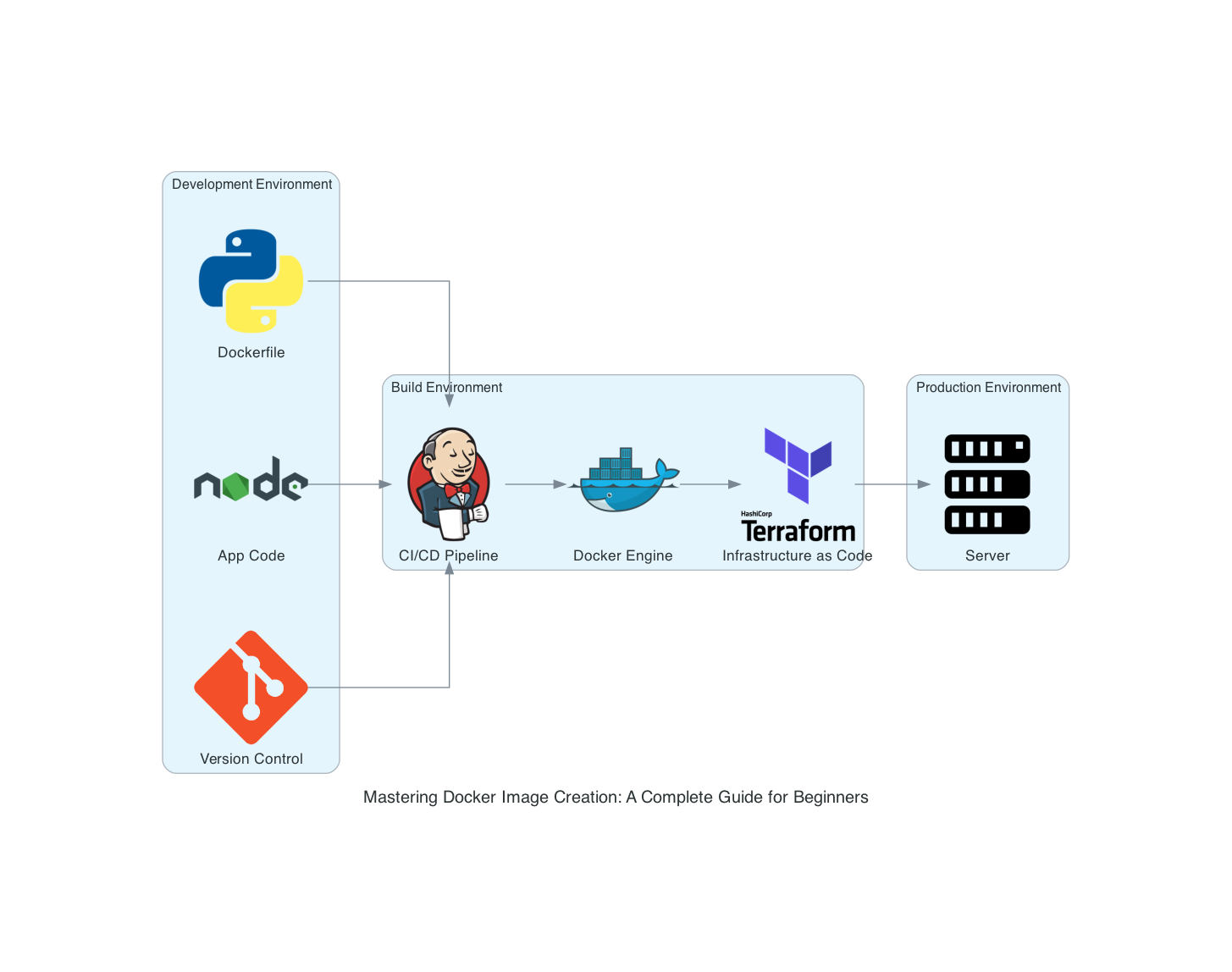Mastering Docker Image Creation: A Complete Guide for Beginners
Learn how to build Docker images from scratch. This comprehensive guide covers prerequisites, Dockerfile basics, best practices, and common mistakes to avoid.
Introduction
Docker has revolutionized the way we think about, develop, and deploy software. Whether you're a developer, system administrator, or a DevOps enthusiast, understanding the intricacies of Docker images is crucial for your work. In this comprehensive guide, we delve into the nitty-gritty details of Docker image creation, from the initial setup to advanced techniques. Alongside, we present a system diagram to visualize the entire process.
Prerequisites
Before we get started, make sure you have:
Basic understanding of Linux commands.
Docker installed on your system.
A text editor for writing Dockerfiles, such as Vim, Nano, or VS Code.
Understanding Docker Images
In Docker's ecosystem, an image acts as a blueprint for creating containers. It contains all the requisite files, dependencies, and configurations to instantiate a container. Think of it as a class in object-oriented programming, where instances (containers) can be created based on the class definition (image).
System Diagram Explained
To make the process more understandable, we have created a system diagram detailing each component and its role in Docker image creation.
Development Environment
Dockerfile: A script containing commands to build a Docker image.
App Code: Your application's source code.
Version Control (Git): Manages versions of your code and Dockerfile.
Build Environment
CI/CD Pipeline (Jenkins): Automates the build and deployment process.
Docker Engine: Responsible for building and managing Docker images.
Infrastructure as Code (Terraform): Manages infrastructure requirements.
Production Environment
Server: The physical or virtual machine where your Docker container will be deployed.
Step-by-step Guide to Building a Docker Image
1. Install Docker
First and foremost, ensure that Docker is installed on your machine. If you haven't installed it yet, you can follow the official installation guides for different operating systems.
Ensure Docker is installed on your system. If not, refer to the official installation guide.
2. Create a Dockerfile
Navigate to the directory where you want to store your Dockerfile. Create a new text file and name it "Dockerfile" (without any file extension). The naming is case-sensitive.
3. Define the Base Image
Your Dockerfile should start by specifying a base image. This is generally an existing image like Ubuntu, Alpine, or a custom one.
# Use Alpine as a base image
FROM alpine:latest4. Run Commands
You can run commands to install packages or perform setup tasks. Each RUN command creates a new layer in the image.
# Install Node.js
RUN apk add --update nodejs5. Add Files
Use the ADD or COPY command to add files from your local machine to the image.
# Add application files
ADD . /app6. Expose Ports
Specify which ports the container should listen to at runtime.
# Expose port 8080
EXPOSE 80807. Define Environment Variables
Set environment variables using the ENV instruction.
# Set environment variables
ENV NODE_ENV production8. Build the Image
Run the docker build command to build the Docker image based on the Dockerfile.
docker build -t my-image:latest .Docker Build Command Options
Understanding the docker build command options can give you more control over the build process. For example, -t lets you tag your image, and --no-cache ensures each step is executed without relying on any cached layers.
Best Practices in Building Docker Images
Use
.dockerignoreto exclude files.Minimize the number of layers by chaining commands.
Always tag your images with versions.
Common Mistakes to Avoid
Don't run your containers as root.
Avoid using
:latestas it makes it hard to trace what version is running.
Conclusion
Building Docker images might seem intimidating at first, but once you get the hang of it, it becomes a straightforward process. Following best practices and avoiding common mistakes will help you master this essential DevOps skill.


